Renault Kwid Review, First Drive
The Renault Kwid is the French Automaker's take on the entry-level hatchback segment. In a bid to disrupt the sales of the Maruti Alto, the Kwid debuts a raft of features for the segment, and yes, it has an SUV-like styling too. Full review here.
Renault has tasted blood with the success of the Duster, and now they’re gunning for the market leader – Maruti Suzuki. So, can the Kwid deliver?
How do you take on the might of Maruti-Suzuki? Hyundai tried with the Eon, and did not quite succeed. Datsun attempted in earnest with the Go, but – well – couldn't really make a go of it. Pun intended!
Now, Renault has built its brand in the Indian market virtually on the back of the Duster compact SUV. And it’s this segment – the compact SUV / crossover space – that has proven to be completely recession proof across the globe over the past few years. As a result of which, every car wants to be one – a crossover that is – and every car manufacturer wants one. The other trend in the automotive universe over the past few years has been the eagerness of manufacturers to look for niches within niches to appeal to a wider audience.
Well, in this case, it appears that Renault has thrown everything – including the kitchen sink and a 7-inch touchscreen – at the problem. They’ve sold 1.2 lakhs Dusters in India already and captured 2% of the market. And now that they’ve tasted blood, they want more – 5% market share to be exact. And this is the car to give it to them. The Renault Kwid is a brand new small car that’s built on a new architecture from the ground up. And its key differentiation, in Renault’s words, is ‘SUV-like’ styling.
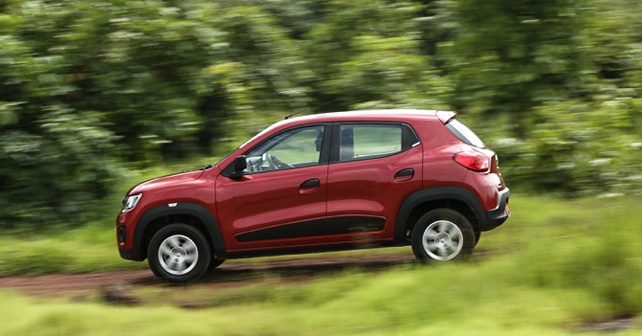
Now, Renault has been thinking about jumping into the small car space in India for a long time. They’ve explored the option of developing a low cost car with Bajaj to take advantage of ‘frugal engineering,’ as Carlos Ghosn, Chairman and CEO of Renault, calls it. And while that didn’t quite make it to fruition, Nissan – part of the Renault-Nissan Alliance – did launch the Datsun brand and the all-new Go small car. So, clearly, they’ve taken learnings from the development of the Go, and have thought long and hard before developing the Kwid.
And while the SUV-like styling may be the most obvious difference, there are a couple of other indicators that point to the amount of work done behind the scenes. 98% of the Kwid will be localized at launch, and 80% of the engineering and development on the Kwid has been done by Renault’s Indian engineers. So, clearly, they’ve taken the time to understand the market and create an end product that delivers great value for money. At the Kwid unveil in Chennai a couple of weeks ago, Carlos Ghosn pointed out that they could of course make a car with all the bells and whistles but the key is entering the market at a price point of 3-4 lakhs – any higher and the car would be irrelevant. The final prices will be unveiled at launch in the next couple of weeks.
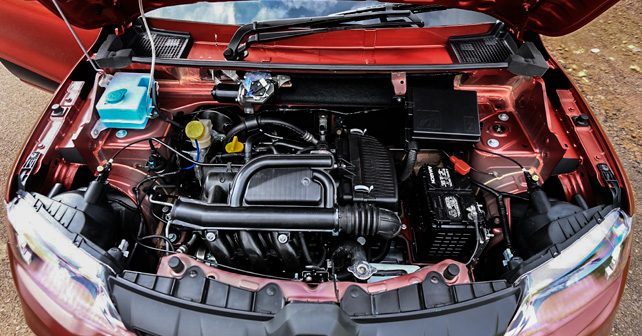
Visually, the Kwid certainly makes an impact. The Duster-like styling ensures that it has a lot of presence on the road. It’s not a large car, but the wide front grille and the 180mm of ground clearance, coupled with the plastic cladding on all sides, ensures that it has an imposing stance that certainly differentiates it from the rest of the small car pack.
Renault has a few tricks up its sleeve on the inside as well. The digital instrument cluster is very clear and straightforward. It doesn’t have a tachometer, but a gear shift indicator instead. The shift indicator could have been a little bit larger – but, again, the digital instrument cluster is another point of differentiation. More than that, though, what dominates the interior in the top-end variant is the 7-inch touchscreen that sits proudly in the centre console. The infotainment system is lifted from the Duster, and offers Bluetooth connectivity and navigation as well – which, once more, is another segment-first! Overall, levels of quality and cabin design are very impressive as well. The rear seat is quite spacious – headroom, especially, is exceptional. The boot, meanwhile, offers 300 litres of space – which is a lot for a small car. Considering it’s not a large car, Renault has done very well with the packaging of the Kwid.
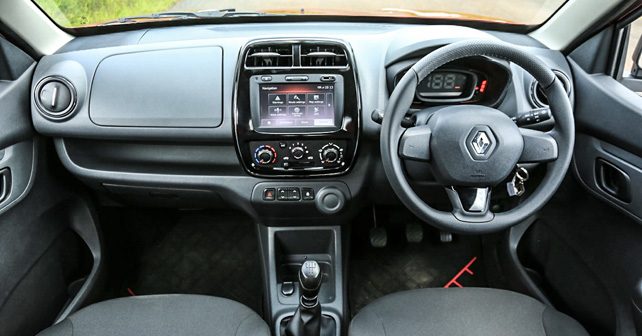
As you start up the engine, you do notice that the idle is a little lumpy. But that’s to be expected from an 800cc, three-cylinder motor. On the go however, refinement levels are very good. It does, after all, have four valves per cylinder. So it doesn’t have any of the three-cylinder thrum or vibration at speed. It’s also exceedingly light – at just 660kgs – so it’s quite spritely on the road. It is defeated slightly, however, when you come up against even the smallest incline. That’s when you feel that the 53bhp and 72Nm of torque aren’t quite adequate. On level ground, on the other hand, the performance feels perfectly adequate for the city. High-speed stability is good, but where the Kwid truly shines is in the ride-and-handling department.
Renault cars have always been known for their ride and handling prowess, and the Duster is no different. Well, that strain of their DNA has been perfectly transferred to the Kwid. On rough roads, and even off-road in fact, the Kwid was very comfortable and handled extremely well. The extra ride height means that you can take some liberties with the Kwid, and we even managed to get it on the beach to take some pretty pictures. And despite the ride height, the handling and body control is extremely good as well.
The main reason, of course, for the spritely performance, the claimed 25.17km/l fuel efficiency – which makes it the most fuel efficient petrol engine car in the country – and the excellent ride-and-handling is the low weight of the Kwid. And they’ve done a lot of work to engineer that in. The engine block, of course, is aluminium, but the entire intake manifold and head is plastic – which saves 2 kilos. The oil pan is also plastic, which saves another kilo. They’ve also worked hard to reduce the number of parts in the car, and therefore the nuts and bolts that go with them. It has only three wheel lugs for instance, and a single windshield wiper. The lead engineer for the Kwid pointed out that whereas most cars would have about 20 kilos worth of nuts and bolts, the Kwid carries just 8kgs of them.
What about safety then you ask? Well, the standard answer is that it meets all the safety requirements in the country at the moment – which are negligible at best. But this is a car that’s been designed for the world market. So, it’s been engineered from the start to meet all the safety regulations in markets such as Brazil, and even Europe. That will, of course, mean adding some weight back into the vehicle, but the basic structure will stay the same. In India, the option for a driver side airbag only exists on the top variant.

On the whole, though, what Renault has been able to do with the Kwid is provide an aspirational vehicle to the small car space – and that’s its real strength. They’re offering 60 categories of accessories, and 6 pre defined accessory packs so that you can style and customize the car to suit your lifestyle. And that provides further insight into the fact that Renault has understood this market very well indeed.
The only stumbling block for the Kwid in comparison to the Maruti Suzuki Alto will be that of reach, since 235 dealerships will never really be able to take the fight to almost 1,500, which Maruti has across the country – especially since Renault feels that the rural market holds a lot of potential for the Kwid. Purely from a product point of view, however, they’ve clearly got a winner on their hands. The rest depends on pricing and the response from the market. Let’s just say that Renault is quietly confident about the Kwid!
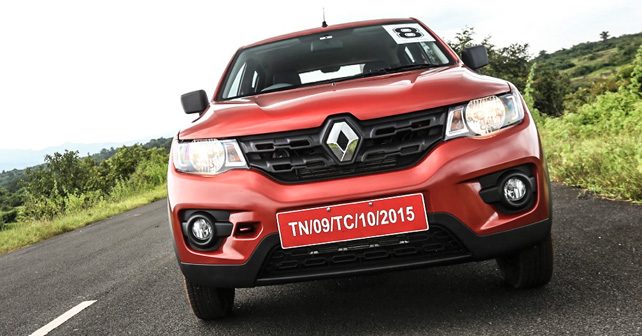
Engine: 799cc / 3 cylinders / DOHC / 12 valves
Fuel: Petrol
Transmission: 5-speed manual / Front-Wheel Drive
Power: 53bhp @ 5,678rpm
Torque: 72Nm@ 4,386rpm


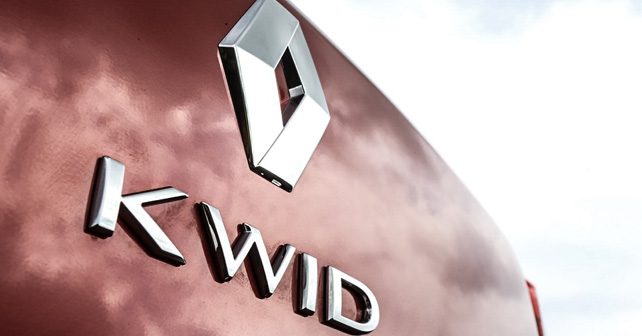
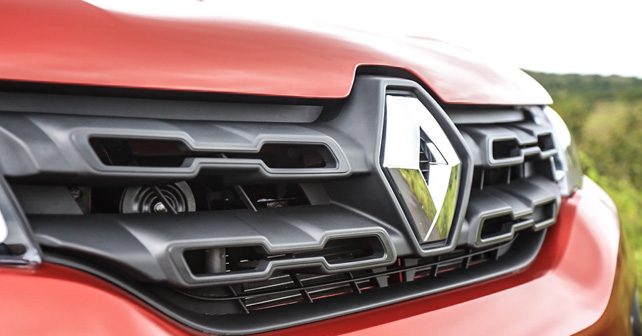
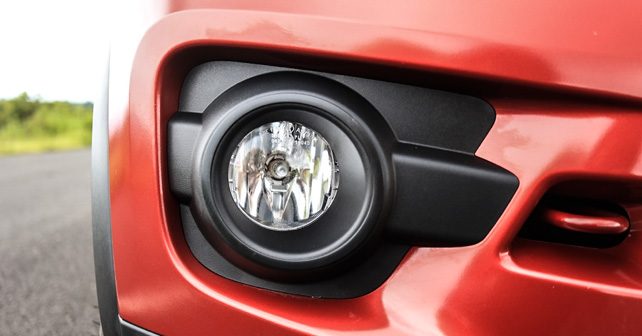
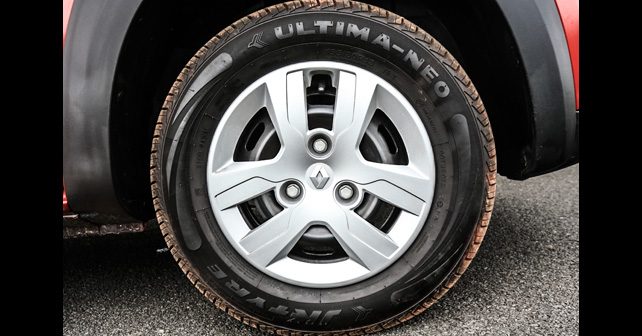

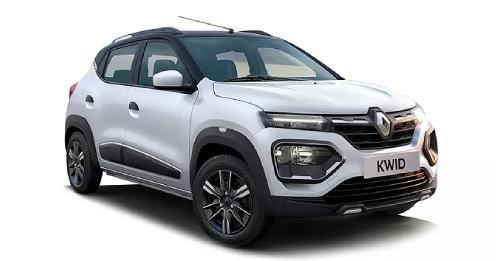
.webp)
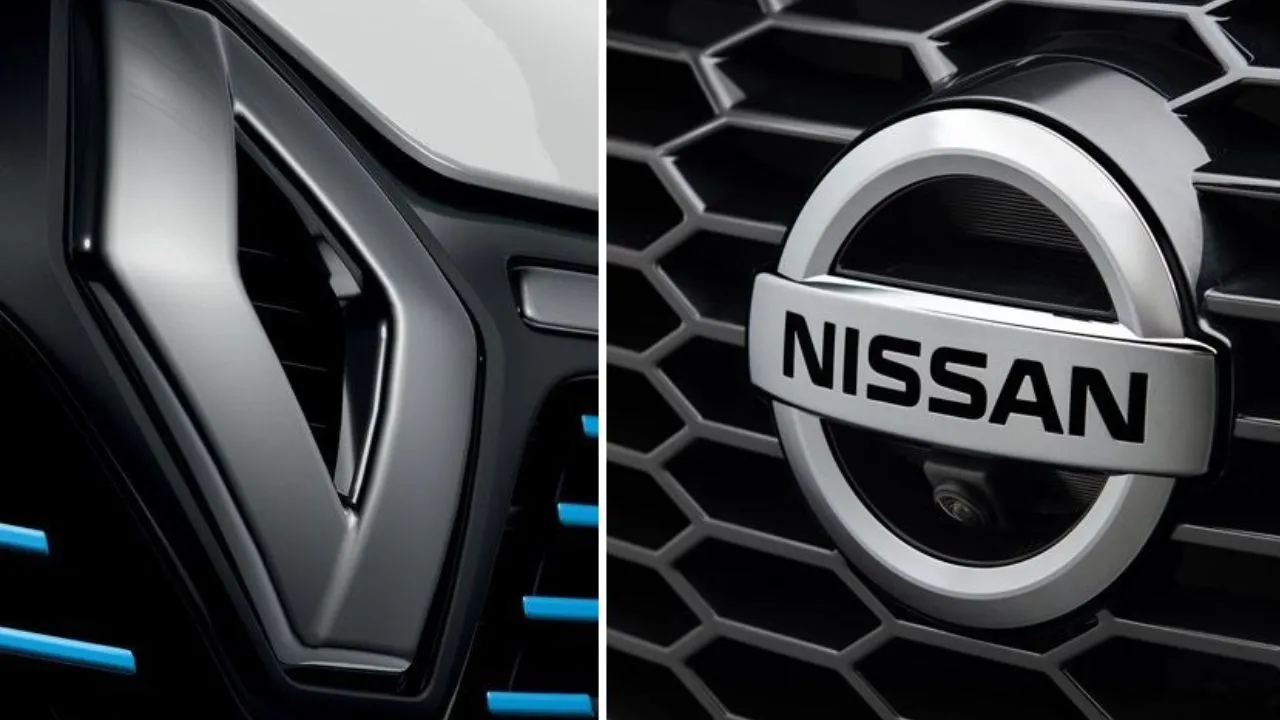

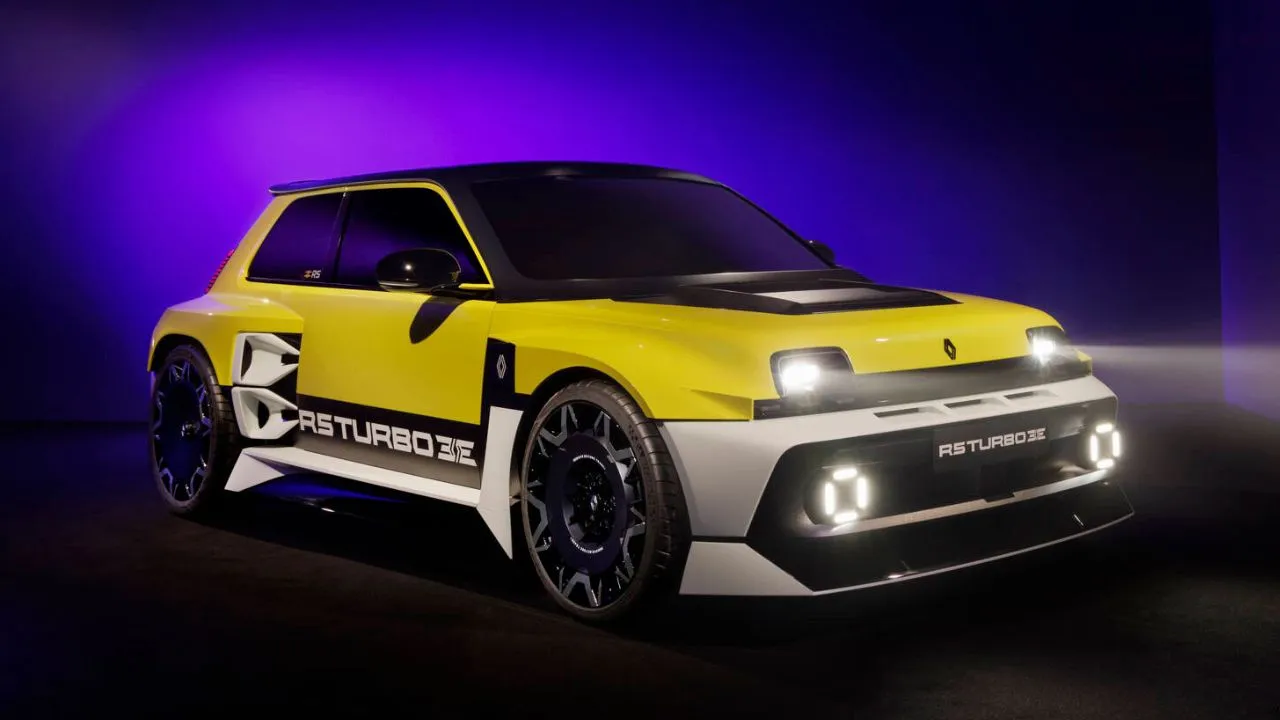
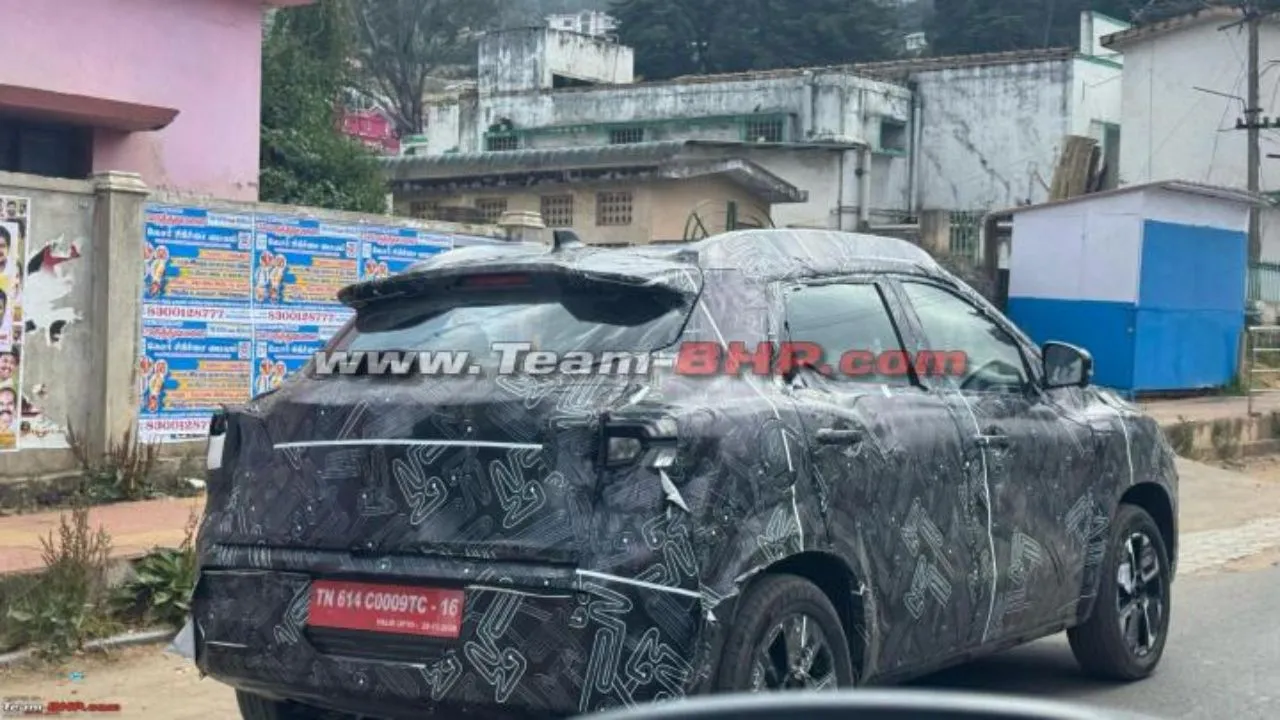
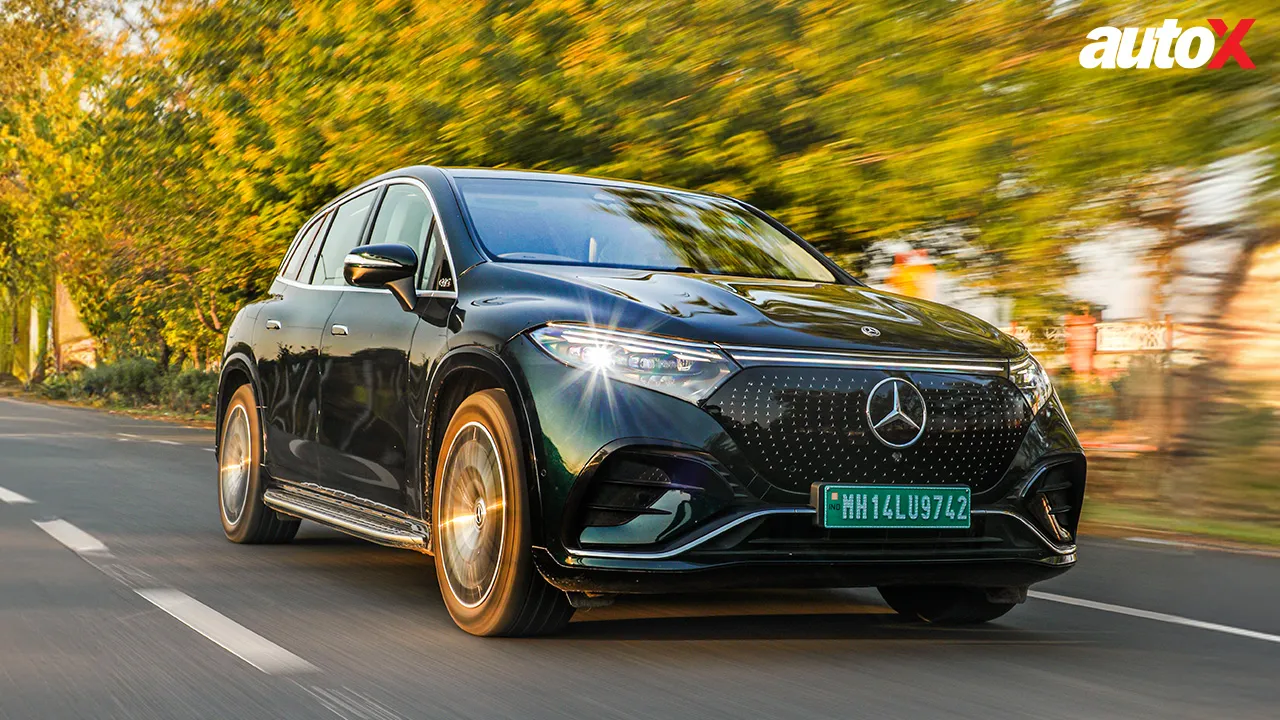
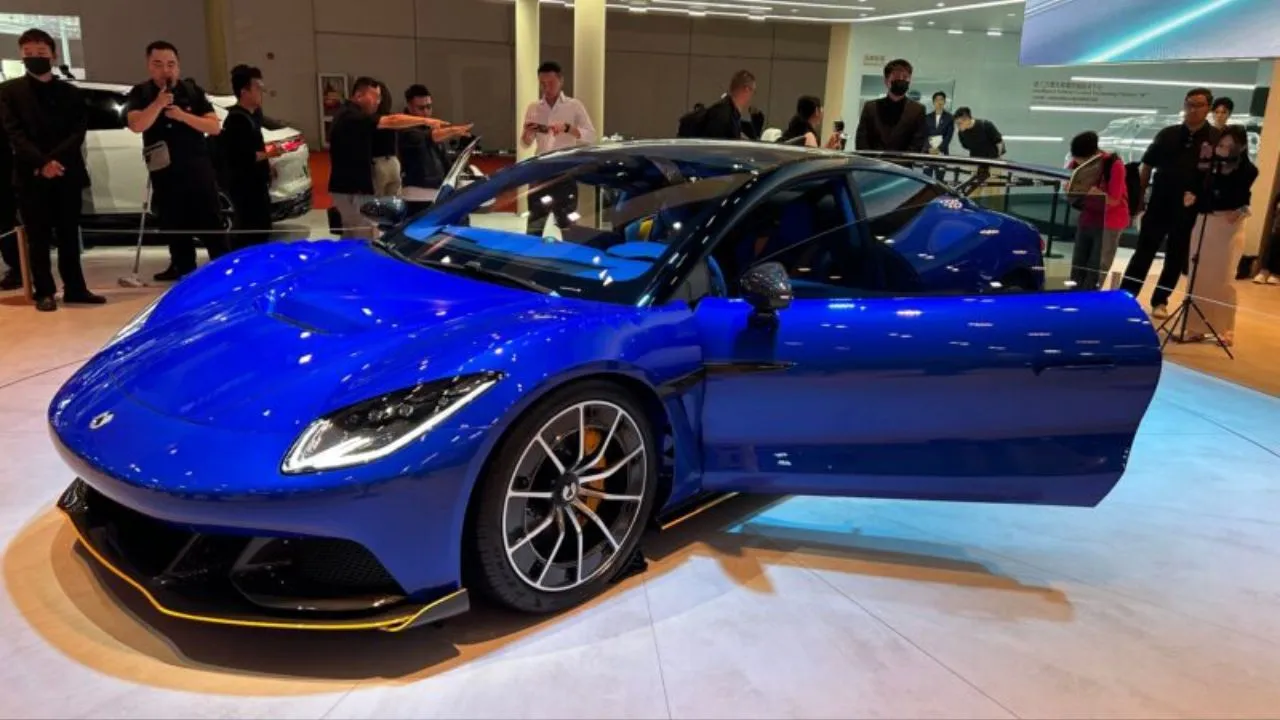
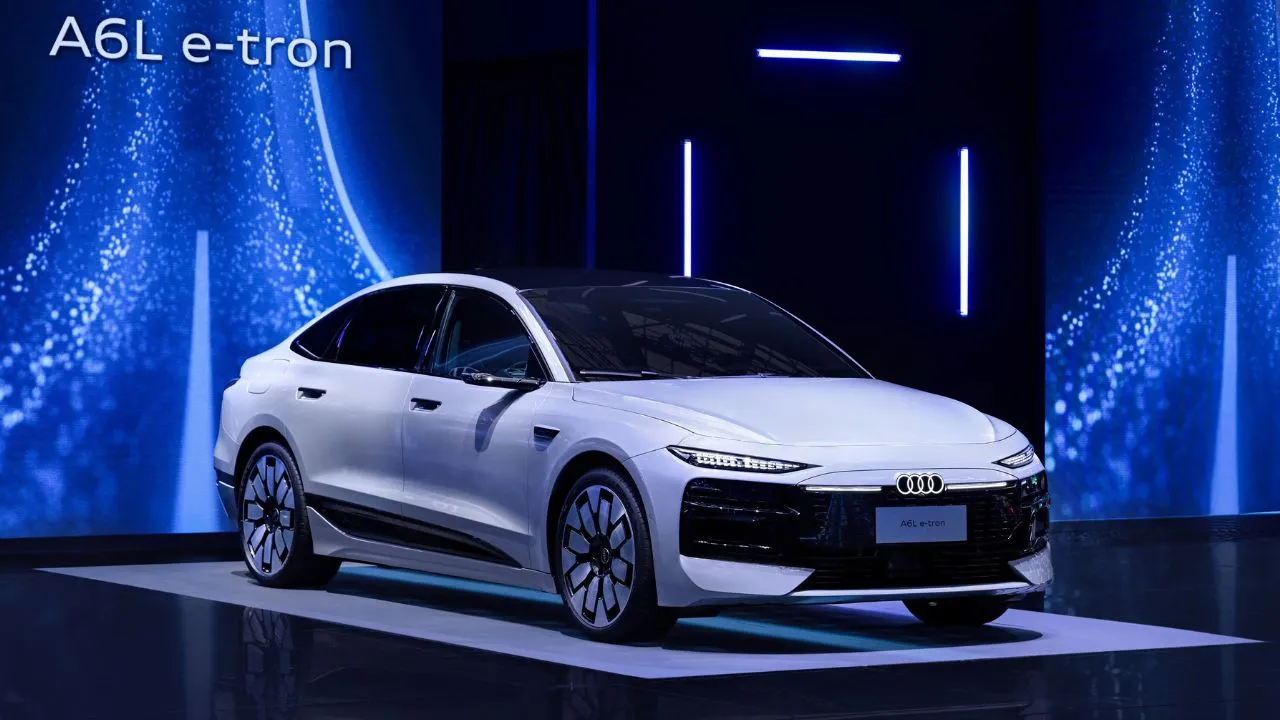

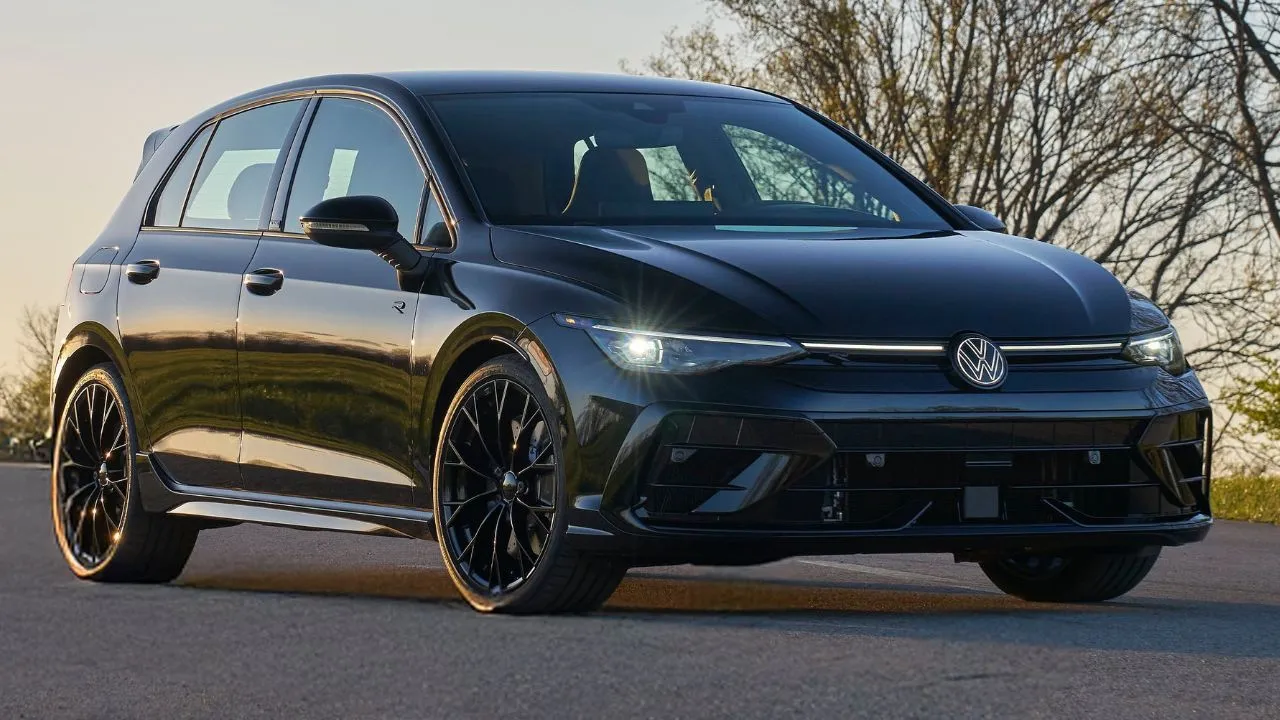
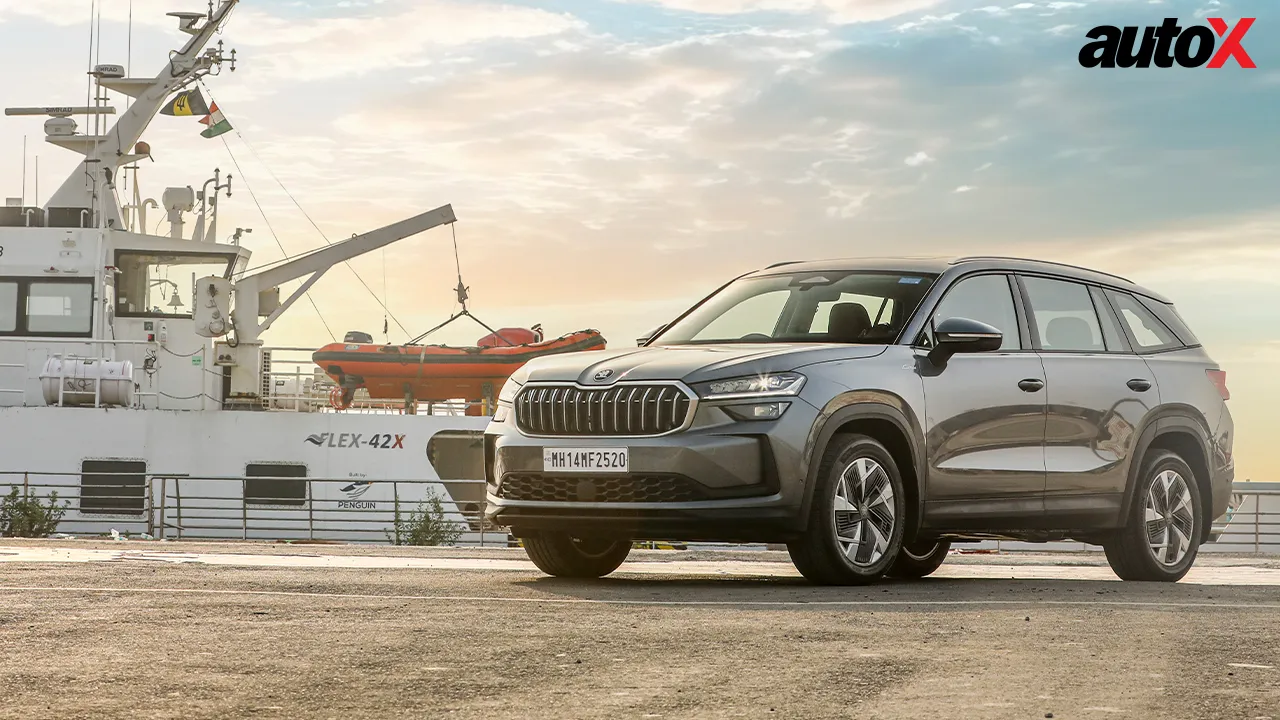



















Write your Comment on